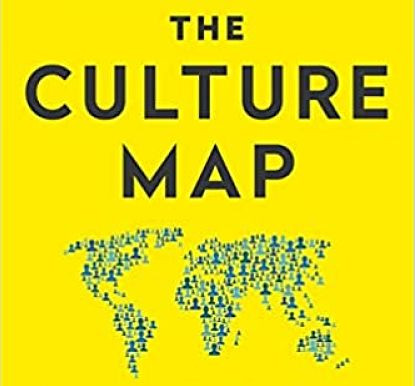The Culture Map: A Great New Book on Cross Cultural Communication
Working with people from different cultures is becoming increasingly more common; however it can also give rise to challenges.
Thankfully, Erin Meyer has recently published a book that provides a framework on how different cultures across the globe view communication at work.
There are many books available on cultural awareness; we believe there is always room for more! This is why were were excited to learn about the latest addition to the genre, The Culture Map.
In this book, Erin Meyer explains the differences between cultures in terms of communication at work from different parts of the globe.
Contributor at Forbes Rawn Shah has written a great a great review on the book here.
In her book, Meyer shares an anecdote from Jorge da Silva. Da Silva is an engineer at a steel company in Brazil. When he and his colleagues tried to convince their American counterparts to adopt a new process, Meyer says, they found that the Americans didn’t want to hear about the reasons for the new approach, but were more interested in what the method would change. This anecdote clearly illustrates that different cultures can have a different view on doing work together, Shah says.
The Da Silva anecdote, Shah explains, is only one of the many examples in Meyer's book that illustrate communication styles and how people consider ideas at work differently. Affiliate Professor in the Organisational Behaviour Department of INSEAD b-school in France, Meyer was on the “On the Radar” list of the Thinkers50 last year and has worked as HR director for McKesson, HBOC, and Aperian Global.
In The Culture Map, she shares the data she gathered after researching 20-30 different countries.
One of the discoveries Meyer made is that national culture is dominant over the culture in a company. Many organisations now work on a global scale, meaning their employees are faced with different cultures. This is why Shah believes cultural awareness is a key skill for both managers and employees.
The Culture Map, he says, shows that it is possible to gain understanding of the differences in work behaviour across cultures. To do so, Meyer gives a framework of eight different scales, ranging from communication and evaluating to scheduling and persuading.
These scales don’t have a wrong or right side, Shah says, but simply show how different cultures handle the concept. Here, Meyer gives the example of the Chinese and Brazilians versus the Danish and the Dutch when it comes to trust: while people in China or Brazil will base trust on personal relationships, people in Denmark and the Netherlands tend to focus on business activities. These cultures are on the far sides of the scale, which means they often view each other’s standpoint as wrong. Thus, before they can successfully work together, both cultures should understand that the opposite view has value as well.
To differentiate between different cultures, The Culture Map seems to presume all people in the same country share the same view. Shah wonders whether it is useful to stereotype people of the same culture. Meyer has also thought about this and responds to it by saying that if you don’t take people’s national culture into account, you will look at them from your own point of view, which can lead to misjudgements.
Shah agrees that national culture matters, but for a different reason: he believes national culture is a great starting point to understand an individuals.
Next to giving an overview of the book’s most important feature – the framework, – Shah also shares his opinion on the book with his readers. He applauds the real stories included in the book that illustrate culture clashes from different points of view. These anecdotes plus Meyer’s personal stories equal a “fascinating read,” he says.
Related Posts
By accepting you will be accessing a service provided by a third-party external to https://www.commisceo-global.com/

 +44 0330 027 0207 or +1 (818) 532-6908
+44 0330 027 0207 or +1 (818) 532-6908
